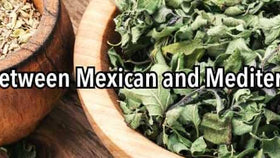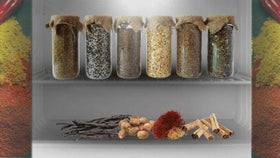Ways to Incorporate Saffron Into Your Cooking
Saffron is one of the most expensive foods in the world, and yet every cooking enthusiast knows that it’s worth the investment. The spice is so costly because it grows on a crocus flower, which is incredibly tough to find. Also, you have to use a painstaking effort to extract saffron from the plant. As intense as the process is, it’s totally worth it once you have a gram of these red threads in your kitchen. This article will describe the different ways to incorporate saffron into your cooking. You’ll soon discover that the ingredient is extremely versatile, so it’s worth every penny.
Some Things to Know
Saffron has an indescribable taste. Some people think it tastes sweet, like honey. Others claim saffron has a musty taste, so it adds spice to various dishes. Since everyone interprets it differently, you can use saffron in all kinds of recipes. However, before we can discuss the ways to incorporate saffron into your cooking, we should narrow down a few facts about the flavoring additive that everyone should know.
For starters, it’s essential to buy high-quality saffron. Luckily, there are some tricks you can keep in mind while shopping that’ll make it easier to separate superior saffron from its less impressive counterparts. Whole saffron has a much more pungent flavor than ground saffron. Do your best to stay away from ground saffron when you can. Also, always look for the brightest, strongest threads on the market. The redder the strains are, the better they will taste. Slofoodgroup has a wide variety of saffron for sale. Check out our online spice portfolio if you’re looking for top-quality saffron with the most potent aroma, color, and taste. You won’t be disappointed with what you find.
Cooking With Saffron
It’s always fun to experiment in the kitchen. If you’re getting tired of making grandma’s traditional meatloaf recipe every night, give some saffron-inspired dishes a try. The spice will add a pop of color to any plate, so there’s no need to use artificial food coloring. You should be mindful of how and where you store your saffron threads, though. The ingredient will lose its coloring and flavor quicker if you keep it out in the open. Instead, store the spice in a cool, dark place to extend its shelf life. Make sure to label your saffron, as well, so you aren’t rifling through your pantry as the paella is burring on the stove.
The best way to get the most flavor out of the spice is by grinding it and adding moisture. Use a mortar and pestle to crush as many threads as your recipe calls for. Then, add the crushed up saffron to a liquid. You can add the spice to warm water, milk, or white wine. Let the saffron sit in the liquid for about twenty to thirty minutes. After it’s finished soaking, you can add the liquid and the ground up saffron to your recipe. Grinding and soaking saffron is truly the best way to get the most out of the ingredient. If you follow these instructions, every saffron-inspired recipe you make will be delicious.
Dishes That Use Saffron
Now that we’ve determined the rules of cooking with saffron, we can give an overview of some saffron-centric recipes to try in the kitchen. Saffron is used most commonly in grain-based dishes like pilaf or paella. Remember, a little saffron goes a long way. You don’t want to use too much of the spice because it may overpower the dish. Saffron should add a little extra kick to a recipe, not take it over completely, so it’s best to use no more than 50 strands of saffron when you’re preparing a paella or risotto that serves four people.
You can also use saffron in different soups or stew recipes. Saffron pairs well with other spices such as cinnamon, vanilla, or cumin. As long as you use a small amount, saffron will blend nicely with the other ingredients instead of overpowering them. Meat and vegetable selection are also key when making a soup or stew from scratch. The first time you incorporate saffron into one of these is recipes, use leaner meat like chicken—that way, the spice doesn’t have to compete with a heartier protein like beef or steak. The same is true for your choice of vegetables. Perhaps try a few veggies with saffron before you start cooking so that you know which ingredients work best with each other.
Since it’s hard to pin down exactly how saffron tastes, some people use it in sweeter recipes. Some custard recipes, for example, could use a pinch of the ingredient. If you’re looking for a finishing touch to add to your custard, think about toasting some saffron threads and sprinkling them on top. You can also use these long red strands to make cookies or other pastries. Keep in mind, though, that saffron tastes better with butter, so keep the margarine in the refrigerator until next time. Finally, you can also use saffron to make sweetbreads. Make sure to spread the amount evenly as you make it so that the final dish is as well-balanced as possible. Whether you’re making something savory or sweet, saffron could be the ingredient you didn’t know you were missing.
You shouldn’t be afraid to step out of your cooking comfort zone every once in a while. It’s fun to try new recipes and experiment with fresh ingredients. Using saffron, for example, may be just the push you need. As long as you purchase high-quality saffron and store it correctly, the ingredient can be useful in a variety of dishes. You should check out Slofoodgroup’s selection of saffron for sale if you’re thinking about giving the spice a try. Our saffron has been tested according to Iso standards. It’s truly the finest saffron on the market today, and we guarantee that this spice will add a kick to every dish you make. So roll up your sleeves and mess around a little. Everyone that tastes your culinary creations will be happy you did.








Slofoodgroup
Author